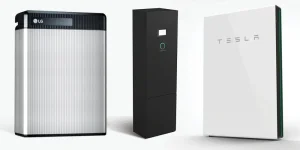Introduction
In the quest for efficient and reliable power conversion, the choice between inverters can significantly impact the performance and longevity of your electrical devices. Modified sine wave inverters, once popular for their lower cost and simplicity, often fall short when it comes to powering sensitive electronic equipment. This article delves into the reasons why opting for a pure sine wave inverter is a superior choice.
Harmonic Distortion and Noise
Reduced Efficiency in Electrical Devices
Modified sine wave inverters produce a square wave that approximates a sine wave, leading to harmonic distortion. This distortion can decrease the efficiency of many electrical devices by up to 20%, as they are designed to operate optimally with a pure sine wave.
Interference with Audio and Visual Equipment
The harmonic distortion can also cause noticeable noise in audio devices and lines on TV screens. For instance, speakers may hum, and monitors may flicker, which not only detracts from the user experience but can also harm the equipment over time.
Equipment Compatibility
Damage to Sensitive Electronics
Sensitive electronics, such as laptops and medical equipment, rely on a stable power supply. The abrupt voltage changes in a modified sine wave can lead to circuit overheating, misreading of sensitive controls, and even permanent damage, thus significantly shortening the lifespan of these devices.
Inefficacy with Certain Appliances
Some appliances, particularly those with inductive loads like refrigerators, air conditioners, and fans, operate poorly or not at all with a modified sine wave. The inverter can cause motors to run hotter than intended, reducing efficiency and potentially leading to premature failure.
Cost and Efficiency
Initial Savings vs. Long-Term Costs
While modified sine wave inverters are cheaper upfront, the potential damage to electronics and increased electricity use can lead to higher costs over time. For example, the inefficiency in power conversion can lead to a 10-15% increase in energy consumption for some devices, directly impacting electricity bills.
Specific Performance Metrics
In terms of performance, pure sine wave inverters offer efficiencies up to 95%, whereas modified sine wave inverters often hover around 75-80%. This difference highlights the superior performance of pure sine wave inverters in converting DC to AC power without significant losses.

Conclusion
Choosing a pure sine wave inverter over a modified sine wave inverter is essential for ensuring the longevity, efficiency, and reliable operation of your electrical devices. The initial investment in a pure sine wave inverter pays off with reduced harmonic distortion, broader compatibility with appliances, and overall cost savings from avoided damage and lower energy consumption. In the long run, the advantages of pure sine wave technology make it a clear winner for both residential and commercial applications.
